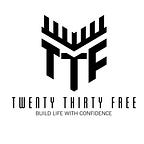The Early Years.
“The best way to predict the future is to create it.” — Saying ascribed to numerous historical figures.
You may have already heard of 3D printers.
You may or may not have used them in your workspace.
As of 2019, the novelty of 3D printing is mostly reserved for software engineers, tech companies, or startup-gurus looking to throw their hat in the creation-kaleidoscope. While the biggest problems with 3D printing include health hazards, printing illegal materials, or even driving up the cost of energy consumption — (imagine your electric bill skyrocketing to double or even triple the normal rate)— the printers themselves remain one of the most remarkable scientific-breakthroughs in the 21st Century. The future they hold is as exciting as one might think.
But…
…let’s say you don’t work in a laboratory printing aerospace parts or widgets for a living. What if you’re not eager to use a 3D printer to give your gang an edge in the illegal drug trade? What if you’re the equivalent of Joe-Schmo; a man or woman sitting at home on the couch after a long day at work, aimlessly flipping through a Netflix or Satellite-TV menu? What if the midnight hour gives you a craving having nothing to do with fast food?
You have the power to create.
And you want to solve a problem now?
If the costs of complex 3D printers continue to dwindle over the next ten to fifteen years, they will become more readily available to consumers who work outside of manufacturing or independent contractors. Therefore, the consumer must have the instructions and responsibility needed to operate the printer without breaking federal laws or physically hurting themselves.
(Most will probably operate less responsibly…)
So this is where a handy how-to manual that doesn’t involve startup-instructions flies into the fray. Because the average consumer will need to be aware of…
…what to project when you’re projecting.
Three Big Ideas to Think About.
“Hell, there are no rules here — we’re trying to accomplish something.” — Thomas A. Edison, famed inventor.
1. Your Diet, Your Way — We’re already getting to the point of printing food, we just need to fine-tune the machines so they can operate on a wider basis. Printers like the ‘Foodini’ are allowing people to print pizza, pasta — which then must be cooked on their own terms. It’s like a Papa-Murphy’s Pizza but for food-use outside of pizza; the biggest development is when companies will start to provide a printer that will cook food in addition to printing it.
No longer will I have to go to the fridge and dig the ravioli out myself — the printer will soon do it all for me.
2. A Rocket Launcher On Guard — 3D printers can print guns and it’s no surprise this is still one of the more controversial uses. Advocates of gun control will decry any attempt for consumer-grade-3D-Printers to be able to print whatever gun they want, when they want. In fifteen years’ time, it wouldn’t be so far a stretch to imagine companies will soon develop greater levels of combustible development — like a rocket launcher for instance.
Forget guns — using a 3D printer to print a rocket launcher would not only assert dominance to any who challenged your organic domain; it would also provide the ultimate theft deterrent against would-be-assailants or thieves. Especially on farms or larger properties which may only be protected by security systems. Somewhere in Northwestern Arizona, a group of armed thieves wander onto a property, hoping to steal the resident’s farm equipment…perhaps even the 3D-Printer itself!
However, their attempted robbery is cut short when an automated-firing-system fires a rocket directly where they stood. Although the cleanup may prove messy — and scorch-marks will be ingrained on the property’s desert-floor — the resident can rest-assured that the 3D-Printer not only does it’s job well but pays back interest in spades.
Who needs insurance when you’ve got a rocket-launcher?
Nobody, that’s who.
3. A Polyhedron McMansion — You know what’s boring? A normal house. You know what’s not boring? A 3D-Printer. You know what transcends any idea of boring and becomes one of the coolest things imaginable? A 3D-Printed-House shaped like a geometric-monstrosity.
Basic homes have already been done, but a tech-billionaire or mathematician-gone-insane will no doubt soon test the limits of what type of residency is possible. With the ability to print both plastic and metal comes the idea to make any home shape come to life.
Living in a printed home would not only make a scientific-statement on how you think scientific-development is the key to solving humanity’s problems; it also provides the gateway for new artistic designs to become mainstream. Traditional, Modern, Cape-Cod, and Ranch style homes will be the homes of the past…
…Neo-Cubist may end up being the go-to style decades from now. Those in the market for a multi-million-dollar home may want to explore the idea of a home having more than just six sides. Maybe one person’s dream-home will consist of a lighthouse and a coral-reef combined with a rectangle.
Our fantasies will run wild.
Conclusion.
“Architecture begins where engineering ends.” — Walter Gropius.
In all seriousness, the potential of 3D-Printing is staggeringly underutilized. Although we are still in the experimental and trial-stages of these machines, once they get complex enough to manufacture objects in less money and time than the old ways predicated…
…then all those 1950’s-sci-fi-television-episodes where a button is pushed and food pops out of an oven may not be so far outside the realm of reality after all.
